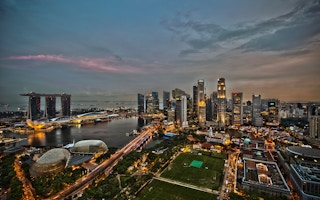Singapore’s urban planning agency, the URA (Urban Redevelopment Authority), is taking a serious look at ways people can work from home and in offices in suburban areas outside the city.
URA Chairman and former senior civil servant Peter Ho made this point on Wednesday at a conference titled “Lee Kuan Yew and the Physical Transformation of Singapore”, adding that a key issue in the planning process is whether everything has to be done in the city.
Discussing the role played by Mr Lee Kuan Yew in the physical transformation of Singapore, Mr Ho noted this was done through leadership and good governance, and sometimes with a dose of tough laws.
But speakers at the conference also said that as the population grows, the challenges for urban planners will evolve as well.
Chairman for Centre for Liveable Cities Lui Thai Ker said: “The bigger challenge for HDB is that with the continuous increase in our population, how are we going to make a long term plan to accommodate them with no loss in the quality of life? In the process of doing that, we also have to think of new MRT lines, new bus routes.”
Mr Ho said: “We can’t have the cake and eat it unless we can find innovative ways to use our space. And technology is beginning to make that positive.
“There has been some recent talk about underground space and I think underground space, if you put more of your functional types of activities underground, (it) opens up enormous possibilities. We will have to continue to innovate along the way. There is no such thing as an end point; it is always work in progress.”
CEO of PUB Chew Men Leong said: “It is not possible to eliminate flash floods completely because nature is a powerful force and given the land constraints that we have, we can only build our capability up to a certain level of capacity. Impact of climate change is something we have to be concerned about; it’s extremity of weather we have to be concerned (about); it’s flash floods we have to be concerned. I think even more critical, (is) how we are going to prepare ourselves for prolonged drought.”
Executive Director for Centre for Liveable Cities Khoo Teng Chye said: “When it comes to planning for a flood, our engineers have had to grapple with (Singapore being) a tropical country, we get lots of rain and we get lots of intense rainfall, so our drains have been designed for a certain intensity of rainfall and that has stood us well over the years.
“Even as we urbanise progressively over the years, the incidents of flooding has drastically reduced but with climate change and changing weather patterns it is very difficult to design what used to be an intensity that doesn’t happen, now seems to happen more often.
“When you talk to the climate experts or the weather experts, they cannot give you a clear answer because these kinds of things need many years to play out before you can scientifically conclude that the weather pattern has changed. But there seems to be enough evidence over the past four (or) five years that things have changed so much… that PUB, without waiting for the final conclusion from scientists, have already taken certain decisions to minimise the risk of flooding in Singapore.”
In his opening address at the conference, organised by the Lee Kuan Yew Centre for Innovative Cities and the Centre for Liveable Cities, former President SR Nathan said: “This physical transformation of Singapore is a story of foresight, political will and people working together to beat what seemed at that time, despairing odds. It is a story of the challenges to find and implement the right policies, which has made our physical development and living conditions what it has become. But at its heart, it is about our story — how our hopes, dreams and aspirations have been transformed. It is the story of our lives.”










